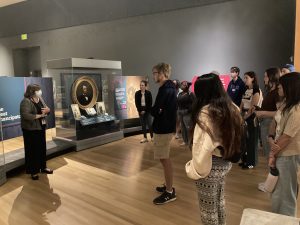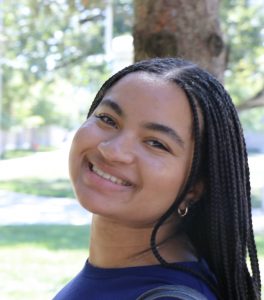Written by student Aiden Gregg as a part of his internship experience in Greece:
This semester, as part of my study abroad program, College Year in Athens (CYA), I have had the opportunity to intern with the Wiener Lab. The Wiener Lab is a research department of the American School for Classical Studies at Athens. The American School is a research institution dedicated to studying Greek archaeology, history, language, and other disciplines under the umbrella of Classical Studies. The lab is located on the main campus of the American School — at the foot of Mount Lycabettus — and is split between two buildings, colloquially referred to as the “old” and “new” labs. For this internship, I have spent most of my time in the old lab, assisting my supervisor, Anna Karligkioti, in processing materials for her research project.

Most of my work for this internship involves cleaning human bones and doing basic identification and grouping. Most bones can be cleaned with a toothbrush, some water, and a small wooden pick, though some thinner bones require more gentle treatment than others. Cleaning the skeletal elements allows my supervisor to identify pathologies on the surface of the bone, which is important to her research. Special care must be taken with some cranial bones, especially mandibles with teeth in place. The teeth can be used for DNA extraction and the cleaning process can make that difficult. Ironically, brushing the teeth can also cause the teeth to appear to have pathologies they did not have originally. As part of the cleaning process, I have become more familiar with human skeletal elements, and how they typically look. I am beginning to understand how to identify more obvious pathologies in the bone, specifically those associated with breakage during life. Additionally, my supervisor has shown me how to use cranial and pelvic morphology to estimate age and sex.
My work aids my supervisor in conducting bioarchaeological analyses of the material for her dissertation. The skeletal material for this part of the project comes from a cemetery near Thebes in Boeotia. She also plans to look at skeletal material from a cemetery in the Mesogeia Plain, in Attica. The cemetery near Thebes contained at least 843 burials from the Geometric to Early Roman periods, though all the remains I have worked with were from the Hellenistic period. My supervisor is currently focusing on using biodistance analysis to understand kinship patterns and mobility in this area of the Greek mainland.
Biodistance analysis uses skeletal morphological traits and analysis of phenotypic variation to understand how people are biologically related to one another. For this, teeth are especially important as they tend to exhibit normal morphological variation and some dental traits have higher heritability and are good for establishing a degree of relatedness. So far, this study has looked at 13 individuals from the Classical period and 24 from the Hellenistic. Following the assumption that people are buried with their kin group, the biodistance from one individual to another will theoretically help establish the extent to which biology influences kin groups. My supervisor has used cluster analysis comparing the spatial distance to biodistance within the cemetery. As of now, it seems that burials closest to each other do not necessarily have less biodistance, and are as such not necessarily as closely biologically related as they are with other individuals within the cemetery. 
Additionally, preliminary biodistance analysis has shown that Hellenistic individuals are slightly more genetically diverse than the Classical. This discovery indicates a slightly higher degree of mobility outside of the main settlement in the Hellenistic period. With that said, it is evident that Thebans during these periods were generally endogamous, marrying within their communities and kin groups. In general, it seems that there was a relatively low degree of mobility during this period, but more skeletal analysis is essential to the project.
My work with the Wiener Lab has uncovered a part of archaeology that I did not have much experience with before this internship. It has required me to excavate — so to speak — some of my high school biology and chemistry. I think this will be particularly helpful if I have to dig through some more bioarchaeological analysis for my thesis. My study abroad program was an essential part of getting this opportunity. I reached out to my student affairs department about internship opportunities, and all I had to do was submit a cover letter to get in touch. I would highly encourage others, whether they attend CYA or any other program, to reach out early and see how you can get involved.








